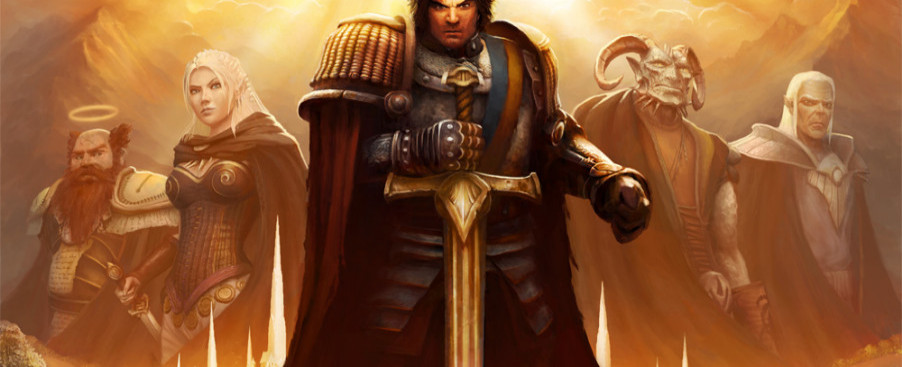Age of Wonders III Previews
-
Category: News ArchiveHits: 1614

More information about Triumph Studios' Age of Wonders III has emerged on the web, courtesy of a small number of hands-on previews for the much anticipated strategy/RPG threequel.
Geekscape kicks things off:
Age of Wonders III provides players with a ton of options to lead your army to victory. The role-playing game elements comes into play with your main character. Stats, skills and spells are just some of the things you will have to manage with your hero. I sat for what seemed an eternity just trying to figure our what abilities to research or what spells to master. Deciding on if I want to acquire the ability to summon crows to fight by my side or to start my domination on the rough seas by building a dock for my warships had me at odds with myself. Also trying to settle on if health points were more important than skills for Sundren to use in battle set me back some time just staring, trying to commit to one or the other.
Equipment is also something that you'll have to deal with as you make your way throughout the world. These items can be found from battles or exploring a cave or building scattered across the map. Nothing like getting a new pair of boots for all the walking ahead or a shiny new ring of fire protection just in case. There are slots to equip pretty much everything to your hero so exploring and looting everything you can would be a be a huge benefit if you want to have all slots equipped with items. To say that Age of Wonders III is a deep game would be selling it short. With so many things to ponder over, one could spend hours and make only a handful of moves. The great thing about this is that you never feel like you're wasting time since every action makes a difference in your success.
Matchsticks for my Eyes follows closely behind:
Like its predecessors, AoW3 takes place across two layers. There is a strategic map, where players explore, build cities, and train armies; and there is a tactical battle map, where those armies meet. Even on the strategic map, the focus is on warfare (and indeed, my reviewer's guide uses the analogy of an RTS). Empire management is quite simple, closer to Warlock than to Civilization. Building up cities unlocks new units, but there is no worker management, few (guns or butter) decisions, and only a modest relationship between terrain and city productivity. There is an interesting twist to character setup players choose one of six starting races (such as human or elf) but also one of five classes (sorcerer, rogue, warlord, etc). Each race has its own unit roster, but you can recruit other races if you take control of their towns, which turns armies into a menagerie over time. However, each class also has its own unit roster for example, rogues recruit assassins who can phase through city walls, whereas dreadnoughts (a sort of magitek engineer) gain access to muskets and cannons instead.
The real heart of AoW3 lies in its tactical battles. The basic rules are straightforward: units can move only so far in a turn, and the further they move, the fewer times they can attack. Archers do more damage up close than from far, but are less effective if they don't have a clear shot; units take more damage when flanked; city walls are a defender's best friend. Battles begin with ineffective pot shots, as archers run out and loose single attacks at extreme range. Then the armies draw close, the combatants start attacking multiple times, and the fights turn vicious. More advanced units are tougher, but not invincible: I've seen them one-hit-kill tier-1 foot soldiers, only to be shot apart by the survivors. But advanced units also bend the rules in interesting ways. For example, infantry will do little damage if they run up to attack a distant target but cavalry inflict bonus damage the further they move. Looking at ranged troops, the basic tier-1 archer, if standing still, can fire three shots a turn, each with an attack strength of 7 to 9. A musketeer has an attack strength of 30 but only fires every other turn. But due to the way damage is calculated, the archer will struggle against well-armoured units whereas the musketeer can still punch through. Hiding a healer behind a pikeman may often be a good idea but this leaves them vulnerable to area attacks, such as those of flame tanks and cannons.
And PCGMedia goes for a video presentation.

